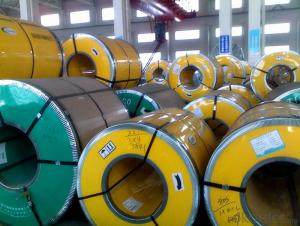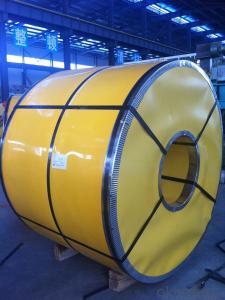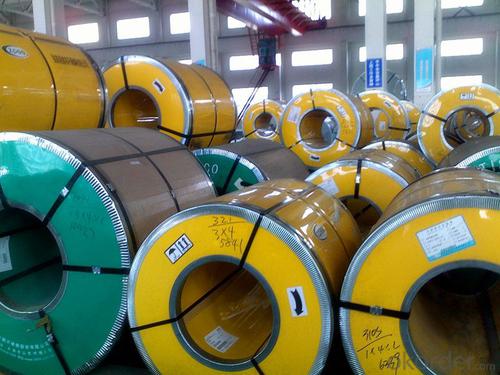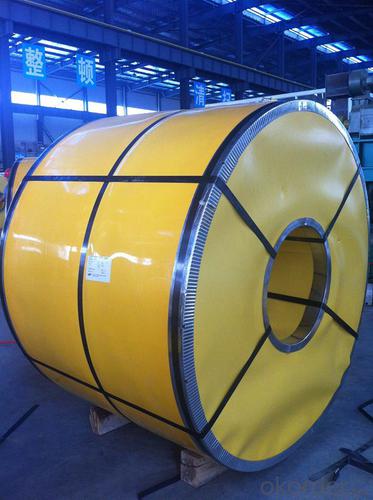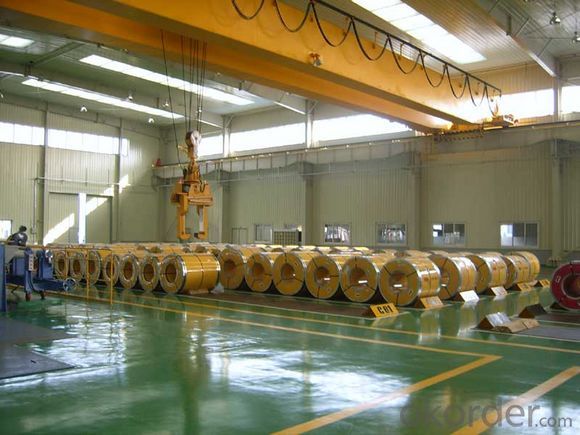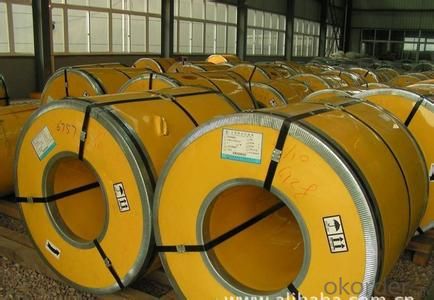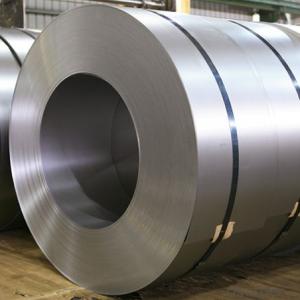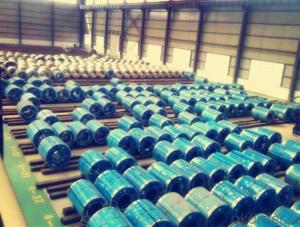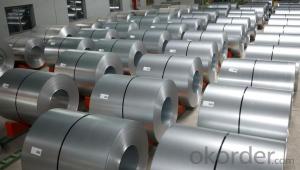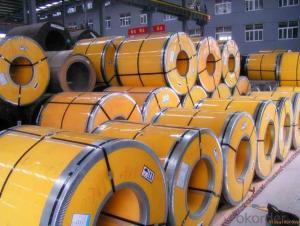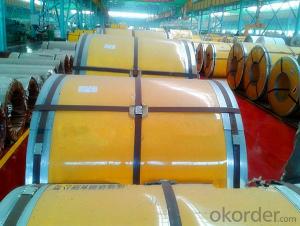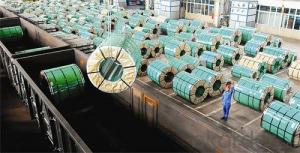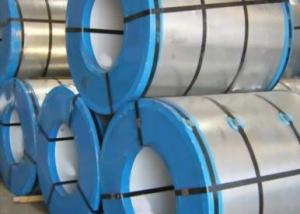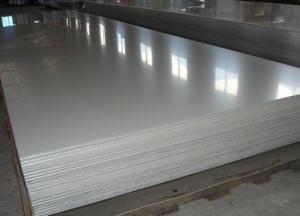Stainless Steel Coil/ Strip 304 Cold Rolled 2B Finish
- Loading Port:
- Ningbo
- Payment Terms:
- TT OR LC
- Min Order Qty:
- 100 m.t.
- Supply Capability:
- 20000 m.t./month
OKorder Service Pledge
OKorder Financial Service
You Might Also Like
Cold Rolled Stainless Steel Coil 304 Grade Narrow/Wide 2B/BA Finish
Packaging Detail: standard export packing or as customer's requirements
Delivery Detail: 7-15 days after the order
Standard: | AISI,ASTM,BS,DIN,GB,JIS | Grade: | 304 | Thickness: | 0.3-3.0mm |
Place of Origin: | China Mainland | Brand Name: | CNBM | Model Number: | 304 |
Type: | Steel Coil | Technique: | Cold Rolled | Surface Treatment: | 2B, BA |
Application: | Medical instruments, building, chemical food industry agriculture | Width: | 500-2000mm | Length: | Coil |
finish: | 2B, BA | item: | 304 cold rolled stainless steel coil | density: | 7.93 |
- Q: Are stainless steel strips resistant to hydrogen embrittlement?
- Yes, stainless steel strips are generally resistant to hydrogen embrittlement. Stainless steel is known for its excellent corrosion resistance, and this property also extends to its resistance against hydrogen embrittlement. Hydrogen embrittlement is a phenomenon where hydrogen atoms penetrate the steel's crystal lattice, causing it to become brittle and susceptible to cracking or failure. However, stainless steel contains a high amount of chromium, which forms a passive oxide layer on its surface. This oxide layer acts as a protective barrier, preventing hydrogen atoms from diffusing into the steel and reducing the risk of embrittlement. Additionally, stainless steel strips are often made with austenitic grades, which have a high nickel content that further enhances their resistance to hydrogen embrittlement.
- Q: Can stainless steel strips be used in construction?
- Yes, stainless steel strips can be used in construction. Stainless steel is a versatile and durable material that can be used in various construction applications. Stainless steel strips are commonly used for structural support, such as in framing and bracing components, as well as for decorative purposes like trim and accents. They are also used in the construction of bridges, tunnels, and other infrastructure projects due to their high strength-to-weight ratio and resistance to corrosion. Additionally, stainless steel strips are often employed in roofing, cladding, and siding systems, as they provide excellent weather resistance and longevity. Overall, stainless steel strips are a reliable and popular choice in the construction industry due to their strength, durability, and aesthetic appeal.
- Q: Can stainless steel strips be used in jewelry making?
- Yes, stainless steel strips can be used in jewelry making. Stainless steel is a durable and hypoallergenic material that can be shaped and polished to create beautiful and long-lasting jewelry pieces. It is commonly used in the production of rings, bracelets, necklaces, and other accessories.
- Q: Can stainless steel strips be used in the production of aerospace components?
- Certainly, aerospace components can be produced using stainless steel strips. The aerospace industry extensively employs stainless steel owing to its exceptional attributes, encompassing remarkable strength, resistance to corrosion, and ability to withstand heat. These qualities render stainless steel strips appropriate for diverse aerospace applications, including the fabrication of structural components, fasteners, and fittings. Moreover, stainless steel's reliability as a material for aerospace components stems from its capacity to endure extreme temperatures and harsh environments.
- Q: Are stainless steel strips resistant to sulfuric acid corrosion?
- In general, stainless steel strips possess resistance against corrosion caused by sulfuric acid. Chromium, found in stainless steel, creates a protective oxide layer on the surface when exposed to air or moisture. This oxide layer acts as a barrier, effectively preventing direct contact between the acid and the steel, thus averting corrosion. Nevertheless, the degree of corrosion resistance can fluctuate based on the stainless steel grade and the concentration and temperature of the sulfuric acid. In environments with highly concentrated and hot sulfuric acid, certain stainless steel grades may undergo corrosion. It is crucial to refer to the manufacturer's specifications and guidelines to ensure the appropriate stainless steel grade is chosen for the specific application involving sulfuric acid.
- Q: Can stainless steel strips be used in the renewable energy industry?
- The renewable energy industry can indeed utilize stainless steel strips. Stainless steel is a remarkably versatile and durable material that provides exceptional resistance to corrosion and longevity. As a result, it is well-suited for a wide range of applications within renewable energy systems. One prevalent application of stainless steel strips in the renewable energy sector is in the production of solar panels. These strips are often employed as reflectors or for bonding solar cells together. This is due to their ability to withstand weathering and moisture. Additionally, stainless steel strips can serve as framing and mounting structures in solar panel installations, offering a robust and reliable support system. Another use of stainless steel strips in the renewable energy field is in the construction of wind turbines. These strips are commonly utilized in the manufacturing of turbine blades, which require materials capable of withstanding high winds, corrosion, and fatigue. Stainless steel's strength and resistance to corrosion make it an ideal choice for this purpose, ensuring the turbines' longevity and performance. Apart from solar panels and wind turbines, stainless steel strips can also find applications in other renewable energy technologies such as hydropower, geothermal, and biomass systems. They can be employed for various purposes, including heat exchangers, piping, and structural components, where their resistance to corrosion and mechanical properties offer significant advantages. In conclusion, stainless steel strips provide numerous advantages that make them well-suited for use in the renewable energy industry. Their durability, corrosion resistance, and versatility make them an excellent choice for various applications, enabling efficient and sustainable generation of renewable energy.
- Q: Can stainless steel strips be used in power generation industries?
- Certainly! Stainless steel strips have a wide range of applications in the power generation sector. This alloy is known for its impressive resistance to corrosion and ability to withstand harsh conditions, making it a suitable material for various purposes. In power plants, stainless steel strips find their use in the construction of equipment like turbines, generators, and other components that are exposed to high temperatures, pressure, and corrosive environments. The corrosion-resistant properties of stainless steel ensure that these components remain intact and structurally sound over time. Moreover, stainless steel strips can be utilized in the fabrication of heat exchangers, condensers, and different piping systems within power plants. The excellent thermal conductivity of stainless steel allows for efficient heat transfer, making it an ideal choice for these applications. Furthermore, stainless steel's resistance to oxidation and scaling at high temperatures makes it ideal for use in boilers and steam generators, which are essential components of power generation systems. All in all, stainless steel strips offer numerous advantages, including corrosion resistance, durability, and high-temperature performance, making them a reliable option for the power generation industry.
- Q: Can stainless steel strips be used in automotive industries?
- Yes, stainless steel strips can be used in automotive industries. Stainless steel offers excellent corrosion resistance, durability, and high strength-to-weight ratio, making it suitable for various automotive applications such as exhaust systems, fuel tanks, decorative trims, and structural components.
- Q: Are stainless steel strips suitable for decorative purposes?
- Yes, stainless steel strips are suitable for decorative purposes. Stainless steel is known for its sleek and modern appearance, making it a popular choice for various decorative applications. It has a shiny and reflective surface that adds a touch of elegance to any space. Stainless steel strips can be used to create decorative accents such as trim, borders, or even custom designs on walls, furniture, or appliances. Its durability and resistance to corrosion make it a long-lasting option for both indoor and outdoor use. Additionally, stainless steel is easy to clean and maintain, ensuring that its decorative qualities remain intact over time. Overall, stainless steel strips are a versatile and aesthetically pleasing choice for decorative purposes.
- Q: Can 111 stainless steel strips be coated with anti-galling coatings?
- Yes, 111 stainless steel strips can be coated with anti-galling coatings. Anti-galling coatings are designed to reduce friction and prevent galling, which is a form of wear caused by adhesion between sliding surfaces. These coatings can be applied to various types of stainless steel, including the 111 grade. The purpose of the coating is to provide a protective barrier that reduces friction and prevents the surfaces from sticking or galling. Therefore, applying anti-galling coatings to 111 stainless steel strips can help improve their performance and longevity in applications where galling is a concern.
Send your message to us
Stainless Steel Coil/ Strip 304 Cold Rolled 2B Finish
- Loading Port:
- Ningbo
- Payment Terms:
- TT OR LC
- Min Order Qty:
- 100 m.t.
- Supply Capability:
- 20000 m.t./month
OKorder Service Pledge
OKorder Financial Service
Similar products
Hot products
Hot Searches
Related keywords
